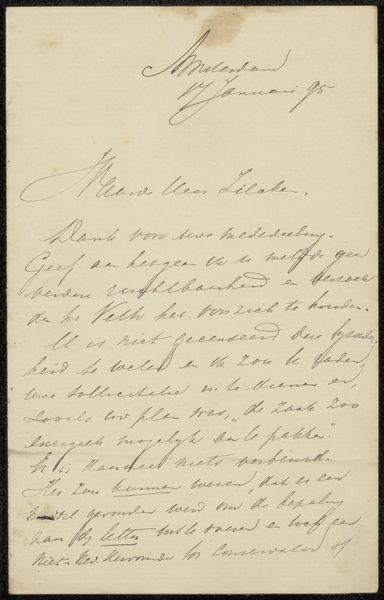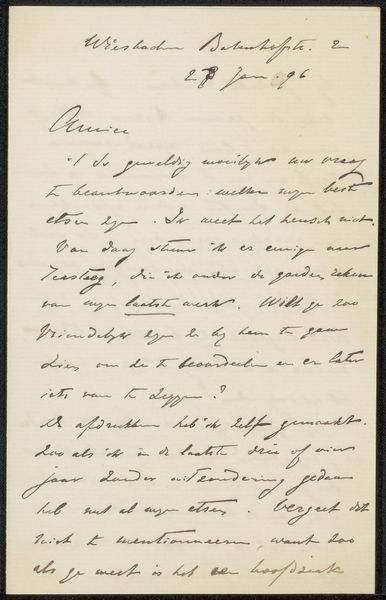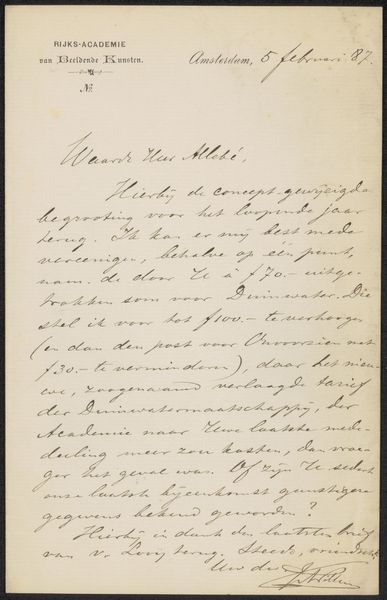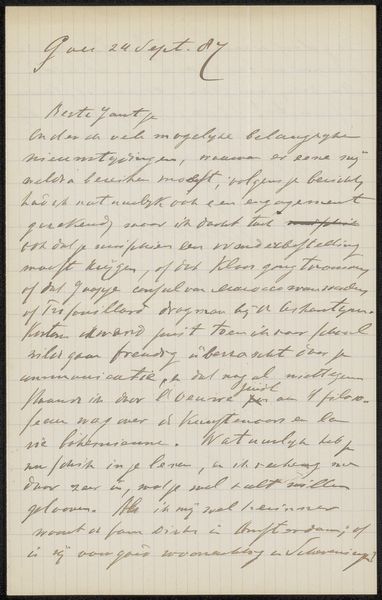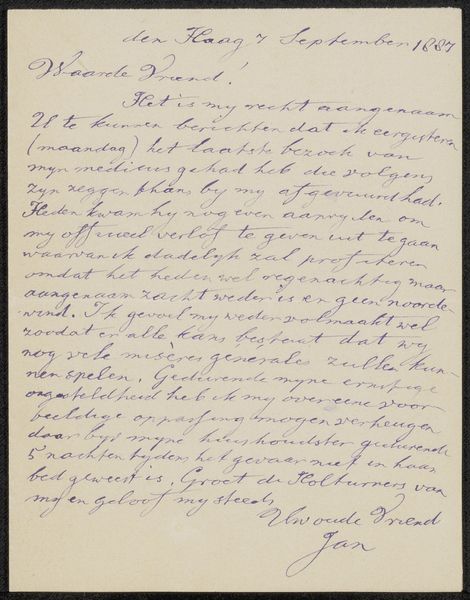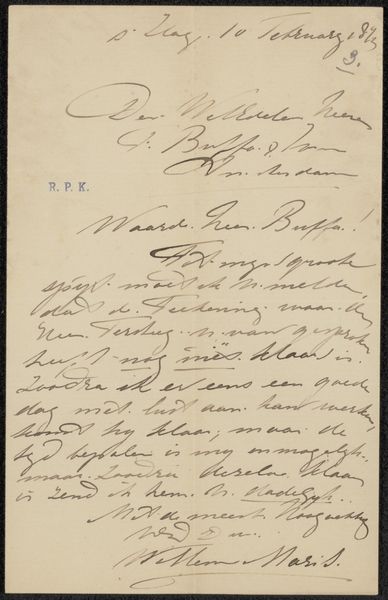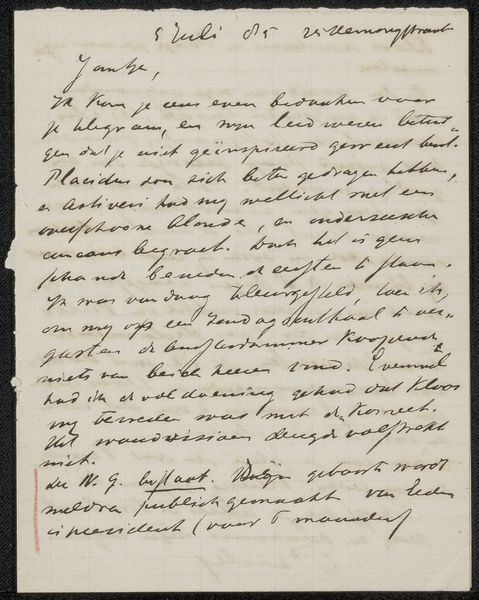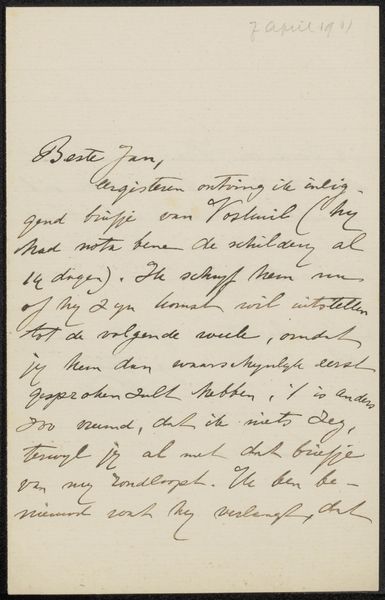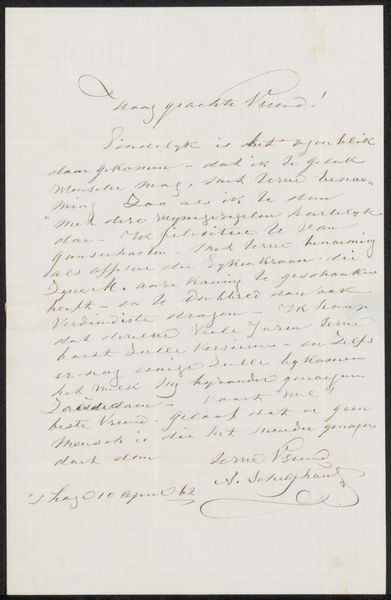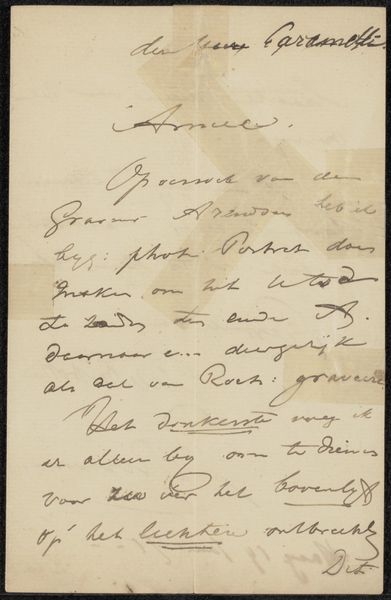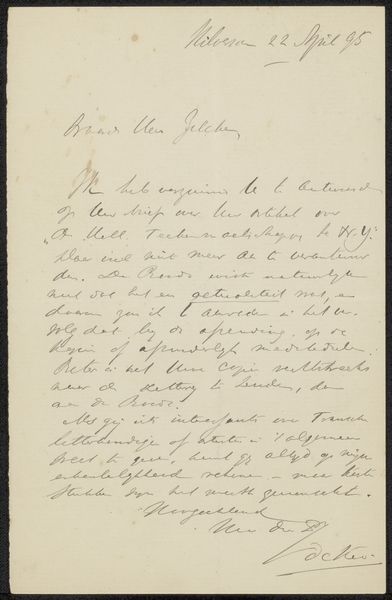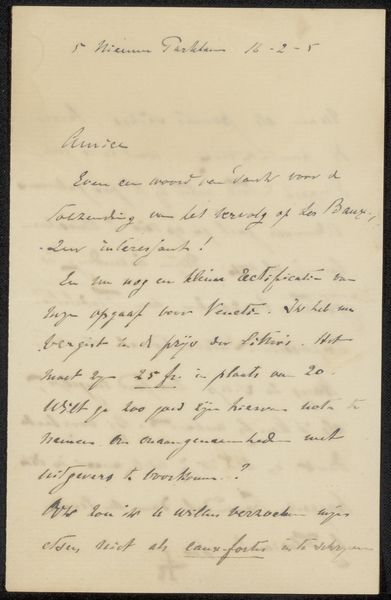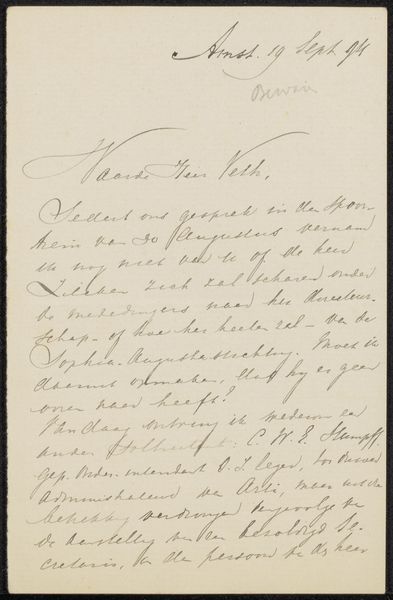
paper, ink, pen
#
pen drawing
#
dutch-golden-age
#
paper
#
ink
#
pen
#
modernism
#
calligraphy
Copyright: Rijks Museum: Open Domain
Curator: This piece is titled "Brief aan August Allebé," and is tentatively dated to 1903. It's a letter, made with pen and ink on paper, by Jèrome Alexander Sillem. Editor: My initial impression is that it's a very personal and immediate work, despite the formal medium of a letter. The dense, flowing script and monochromatic palette give it a certain intimacy, wouldn’t you agree? Curator: Absolutely. While it might seem like just a personal correspondence, consider the role letter-writing played in artistic and intellectual circles at the turn of the century. Letters weren’t just private communications; they were often a vital part of networking and the circulation of ideas. This letter to August Allebé offers a window into that world, a glimpse into Sillem’s connections within Amsterdam's art scene. Editor: It is really interesting how the calligraphic strokes become a composition in themselves. See how Sillem manipulates the thickness of the lines, the looping ascenders and descenders – it almost becomes abstract at points, transforming text into pure visual form. Curator: Yes, the letter's aesthetic qualities do have artistic significance, particularly the blend of practicality and artistic skill in calligraphy at the time. While primarily informational—perhaps extending an invitation, confirming arrangements—it serves as a historical artifact which gives the letter considerable value. Editor: And this density contributes to its aesthetic appeal. The entire space is occupied with this nervous energy, it almost quivers on the page! It’s definitely drawing and text combined into this single form. Curator: Indeed, examining the context highlights that the Dutch art scene was going through profound transformations around 1903, influenced by symbolism and early modernism, thus situating a simple communication into artistic practices during social upheaval. Editor: Considering this close formal relationship between message and execution has deepened my appreciation for this handwritten record. It moves beyond being merely informative and approaches being art in and of itself. Curator: I agree. It reminds us of the personal networks that have always played a role in art history, as well as the different roles it can play depending on social circumstance.
Comments
No comments
Be the first to comment and join the conversation on the ultimate creative platform.
